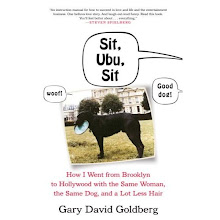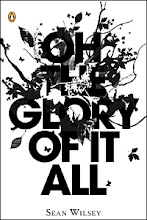 “[T]he New Museum of Contemporary Art, on the Bowery at Prince Street on the Lower East Side, is the kind of building that renews your faith in New York as a place where culture is lived, not just bought and sold,” writes Nicolai Ouroussoff in The New York Times. The (recently renewed) critic points out a few architectural highlights in an interactive piece here.
“[T]he New Museum of Contemporary Art, on the Bowery at Prince Street on the Lower East Side, is the kind of building that renews your faith in New York as a place where culture is lived, not just bought and sold,” writes Nicolai Ouroussoff in The New York Times. The (recently renewed) critic points out a few architectural highlights in an interactive piece here.The architects behind the space are Kazuyo Sejima and Ryue Nishizawa of the Tokyo-based firm SANAA. “The Bowery was very gritty when we first visited it,” the architects explain. “We were a bit shocked, but we were also impressed that a contemporary art museum wanted to be there...The New Museum is a combination of elegant and urban. We were determined to make a building that felt like that.”
Paul Goldberger of The New Yorker hearts the building, too – for the structure and how it relates to its location. “Sejima and Nishizawa have designed a building that is just right for this moment of the Bowery’s existence. It is a pile of six boxes, stacked unevenly, like a child’s blocks. Sometimes the blocks mount up in a pattern of setbacks like that of a traditional New York building; sometimes they jut out over open space in a way that suggests the architects had something more radical in mind. The building is original, but doesn’t strain to reinvent the idea of a museum.”
For this blogger, one of the most striking features was the glass curtainwall at the street level. It allows the sidewalk to extend into the museum, and outside foot traffic is visible even all the way back in the rear gallery, n
 ear the café. The narrow staircase that connects the third and fourth floors is an intriguing passageway between galleries, and even affords room for a confessional-like exhibition space. And of course the building’s stacked-box silhouette lends itself to becoming an icon, like Frank Lloyd Wright's spiraling ramp for the Guggenheim. In fact, advertising created by Droga5 for the New Museum already uses the New Museum’s distinctive profile.
ear the café. The narrow staircase that connects the third and fourth floors is an intriguing passageway between galleries, and even affords room for a confessional-like exhibition space. And of course the building’s stacked-box silhouette lends itself to becoming an icon, like Frank Lloyd Wright's spiraling ramp for the Guggenheim. In fact, advertising created by Droga5 for the New Museum already uses the New Museum’s distinctive profile.
UPDATE: Nishizawa and Sejima give The Japan Times an interview here. They talk about how their partnership started – at first he (Nishizawa) was working for her (Sejima). And they elaborate on how the building got its distinctive shape. “First, with a plot of land as small as that 740 sq. meters, there was no alternative but to stack the galleries on top of each other. But when you put galleries on top of each other, you end up with a high-rise building, right? ...[A]ll the floors end up the same and...the building ends up looking more like an office tower than a museum. So we decided that each floor needed to look different from the others, and to achieve that we needed to vary their sizes,” says Nishizawa.









































